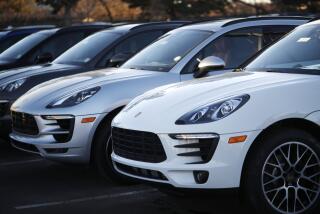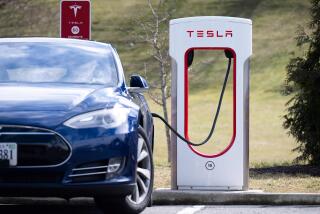Detroit 2008: Take me to the river
A good way to bracket the Detroit auto show is to think in terms of hometown hero and most lowly and unloved visitor. The former has to be the 2009 Chevy Corvette ZR1, a 620-plus-horsepower Visigoth, a skull-cleaving barbarian wielding a carbon-fiber cudgel. The first six-figure Vette, the ZR1 (powered by a supercharged 6.2-liter V-8) promises to leave just about any Ferrari or Lamborghini you care to name for dead. If this is the last incandescent blaze of doomed petrochemical optimism, it is nonetheless glorious.
In tremulous counterpoint we find the Li Shi Guang Ming Tanghua, an Isetta-size mini-electric car shaped like a cream-filled doughnut. Tanghua is everything and anything the Vette is not: It’s built in China, and so is a comically small harbinger of market forces that will come. It’s electric, which is a technology that has a future, while gas-bonging supercharged engines probably have a shorter lease on life. The Tanghua is sensibly scaled to the requirements of urban commuting, while there is no highway big enough, no unpatrolled Siberian frontier big enough, to contain the Vette.
This year’s North American International Auto Show is all about opposition, this and that, past and future, Hegelian thesis and antithesis and, ultimately, synthesis. The whole industry is being retooled, rescaled, recalibrated in a frantic effort to get ahead of the market and keep ahead of increasing demands for fuel economy.
Example: The Jeep Renegade concept, a rock-humping, stump-jumping off-roader that is -- surprise -- a diesel hybrid. How about a Prius-style pickup (the Toyota A-Bat)? Mercedes-Benz has downsized the Gelaendewagen SUV to make the GLK (“K” for kurtz, for short). Ford is launching a whole new series of engines, with gasoline turbocharged direct injection, that offer 20% better fuel economy. General Motors has passed on a next generation of V-8s in favor of smarter V-6s. Audi is putting monster diesels in its top-end sports cars.
If I had to coin a meme, it’s “change without change.” Consumers have shown that they like the automotive landscape pretty much the way it is, and don’t want to sacrifice or adjust for better fuel economy. But they want better fuel economy, just the same.
In the midst of all this transformation, the companies that are just plodding along with reskins and refreshes are going to have a tough week. Who really cares if the Ford F-150 and Dodge Ram have new interiors? Kia is churning out a seven-passenger version of the Sorento, called the Borrego. I cannot see the new Forester for the trees.
This is my 10th Detroit auto show, so I’m allowed a little cynicism -- if not allowed, I’ll show some anyway. On the floor this weekend, I’ll be challenging some of the carmakers’ most media-managed executives with your questions: Why can’t we have a 2,000-pound car? Why push ethanol when you (the automakers) know it’s a bad deal?
I’ll also be doing V-blogging from the show floor. Among the topics: the most self-evident design errors and how they get through the process (look out, Jaguar XF). Our first-ever Index of Uselessness, in which we will compare horsepower, price and cargo capacity. We’ll look at the car with the most far-flung parts supplier network. We’ll try to sit in the Mach 5 from the upcoming “Speed Racer” movie (I hope I haven’t just tipped off security). We may even cross the Detroit River and visit that bastion of Detroit culture, the Windsor Ballet.
See you there?
dan.neil@latimes.com
Read more on our Up to Speed blog.






